Capturing The Action With Richard Pearce
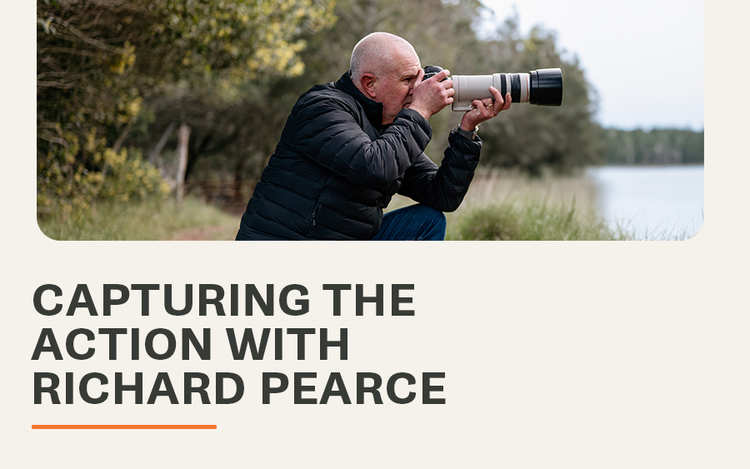
Here at Merrell, we love and encourage all things outdoors! Running, hiking, living, adventuring – anything and everything that connects you to nature.
And sometimes, these moments should be captured, so that we can fondly reflect on some of the amazing experiences. That’s why, in today’s blog, we chatted with outdoor photography expert, Richard Pearce. Read on to learn some interesting tips and tricks of the trade.
Question 1: How did you develop an interest in photography?
My interest in photography started purely as a hobby about 15 years ago. During my children’s school years, I took great pleasure photographing their sports matches, and I suppose, that is where my love for action and sports photography started. Over time it slowly evolved to the point where I now photograph most of the Running, Mountain Biking, and Triathlon events in and around Nelson Mandela Bay.
Question 2: What do you find most inspiring about photographing events such as trail running, mountain biking, adventure race etc.?
There are several things I find inspiring about capturing these events. But if I had to narrow it down, it would have to be:
- Capturing Human Endeavour: These sports exemplify the remarkable endurance, agility, and determination of human beings. Photographing these events provides me with an opportunity to freeze those moments in time, showcasing the strength and perseverance of athletes. These events bring out the raw emotion within athletes, and I try my best to capture this.
- Connection with Nature: Trail running, and mountain biking often take place in scenic locations - high mountain ranges, dense forests, and stunning coastlines. This allows me to do what I love and enjoy nature while doing it.
- The Challenge: These events often take place in challenging and changing conditions, testing my skills as an event photographer. There is a certain thrill and satisfaction in being able to capture great shots despite these conditions, making the process rewarding.
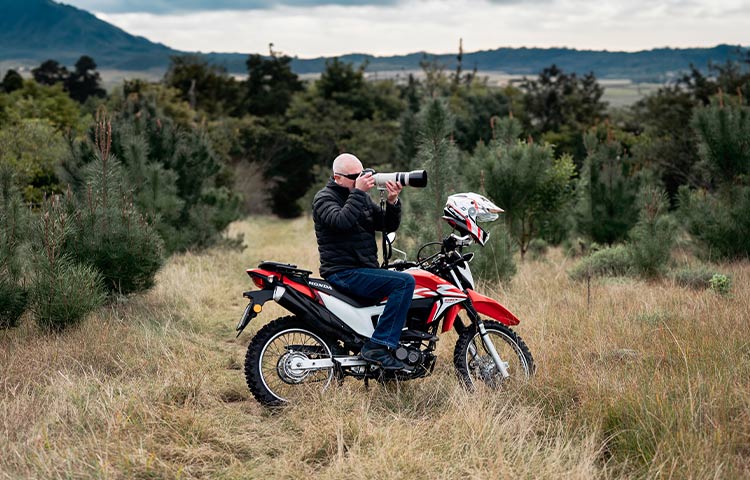
Question 3: Can you share a memorable experience or story from one of your outdoor sports photography adventures?
I’ve had many memorable photographic moments and experiences over the years, but the one that stands out for me the most would be when my wife raced in her first 70.3 triathlon. I followed her the entire race, and I could see that she was having a tough day. With only a km or two left to go in her race, I waited for her at the finish line with my heart pounding in my chest and tears streaming down my face. I was there to capture her first steps on the red carpet and to the finish line.
Question 4: How do you approach capturing the essence of a particular event?
It's important to have a deep understanding of the event. What type of event is it? Is it a race, a charity ride, a festival, or a community event? Each type of event has its unique characteristics and atmosphere that should be captured.
- Capturing the Scenery: The location and surroundings of an event are often key parts of its charm.
- Focusing on the Participants: Who are the people taking part in the event? Are they professionals, hobbyists, or a mix of both? What are their stories? Try to capture the determination, effort, enjoyment, and camaraderie of the participants.
- Emphasizing the Action: The heart of a mountain bike event is the riding. Try to capture the speed, the skill, the daring, and the intensity of the riders. Show the critical moments, the close races, the dramatic falls, and the triumphant finishes.
- Highlighting the Community: Events often bring together a diverse and enthusiastic community. Highlight the spectators, the volunteers, the organisers, the sponsors, and the local community. Show their passion, their support, their anticipation, and their celebration.
- Depicting the Atmosphere: Every event has its unique atmosphere. Is it competitive or relaxed? Is it serious or fun? Is it loud and exciting, or quiet and intense.
- Including Details: Small details can make a big difference in capturing the essence of an event. This could include things like the weather, the condition of the trails, the designs of the bikes, the smell of the forest, and the sound of cheering supporters.
Question 5: What are some challenges you've faced while photographing outdoors, and how have you overcome them?
- Lighting Conditions: Depending on the time of day and weather, lighting can be a major issue, especially in forests or mountains where the event might take place. Overcoming this requires adjusting camera settings appropriately. Even though I’m not a huge fan of using off-camera flashes, it can help create dramatic images.
- Dust and Dirt: Certain events and conditions can generate a lot of dust and dirt. It’s always advisable to use gear with adequate weather sealing, and for those miserable rainy days, a good camera cover will go a long way to keeping your camera dry.
- Finding Good Angles and Compositions: With the fast-paced nature of these events, it can be a challenge to compose good shots. Overcoming this involves pre-planning, understanding the course layout, and being ready to move quickly to different locations.
- Capturing the Right Moments: Timing is everything in sports photography. It's about not just capturing the action, but also the emotions and key moments. This comes with practice, anticipation, and sometimes, a bit of luck.
- Safety: It's important to keep safety in mind when photographing these events, as there's a risk of getting in the way of an athlete or rider. Staying aware of the surroundings, knowing the course, and respecting safety guidelines can help manage this risk.
- Access and Positioning: Depending on the event, getting to the best spots for shooting can be challenging due to restrictions or physical limitations (steep hills, dense forests, etc). Using my motorbike and 4x4 quad has been a game-changer for me.
Question 6: What equipment and gear do you consider essential?
- Camera: Preferably a DSLR or mirrorless camera with good autofocus and high burst rates for capturing fast action. It should also have a good ISO range for varying light conditions.
- Lenses: A fast zoom lens such as a 70-200mm f/2.8 is great for many outdoor sports. For closer action, a wide-angle lens (e.g., 17-40mm or 24-105mm) might be useful.
- Memory Cards: High-speed memory cards to capture high-resolution photos at fast burst rates without lag.
- Extra Batteries: Outdoor sports photography often requires being out in the field for hours, and having extra batteries ensures you won't miss any action.
- Tripod/Monopod: For stabilizing longer lenses these could be useful but I often find that they just slow me down and get in the way.
- Camera Bag: A sturdy and waterproof camera bag to protect your gear from the elements and make it easy to carry around.
- Rain Cover: If you're shooting in unpredictable weather, a rain cover can protect your camera and lens.
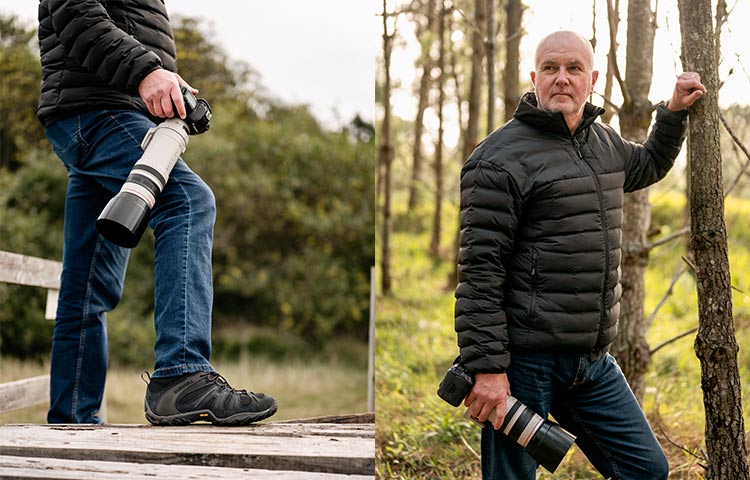
Question 7: Do you have any tips or techniques for capturing dynamic and exciting shots?
Absolutely, capturing dynamic and exciting shots during a race can be a fun challenge. Here are some of my tips:
Pre-scout the Course: Before the race begins, study the course. Look for potential spots where you can capture key action moments such as steep downhill sections, tricky turns, jumps, or even beautiful scenic backgrounds. Consider different perspectives like a low angle to emphasize the height of jumps, or a high vantage point to show the scale of the course.
Use a Fast Shutter Speed: To freeze the action and avoid motion blur, you'll need a fast shutter speed. Start with 1/1000th of a second and adjust as needed depending on the speed of the action.
Panning Technique: To create a feeling of speed, you can use a slower shutter speed and follow the motion (panning) as you take the shot. This will blur the background, making the rider or runner stand out and giving a sense of motion.
Telephoto Lens: A telephoto lens will allow you to get close-up shots from a distance. This can be particularly useful if the course is wide and it's hard to get close to the action. Remember though, long lenses can require faster shutter speeds to avoid camera shake.
Wide-Angle Lens: Alternatively, a wide-angle lens can help you capture more of the environment and convey the scale of the race.
Capture Emotions: The start and finish lines are great places to capture the excitement, anticipation, exhaustion, and relief on the faces of the athletes.
Look for Details: Don't just focus on the race. The crowd, the surroundings, the bikes, the battle scars of the race such as mud spatters, all of these can tell a story.
Use the Light: Early morning or late afternoon are often called the "golden hours" for photography. The soft, warm light at these times can make for stunning photos.
Capturing great action shots often comes from a deep understanding of the sport itself. Understanding the competitors, the course and the rhythm and flow of the race will allow you to anticipate key moments and capture the most compelling images.
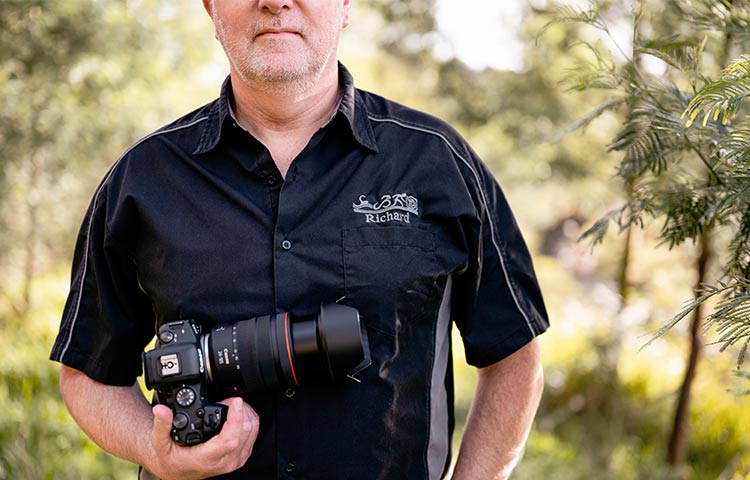
Question 8. Are there any specific techniques or tricks (any specific settings on your camera that are ideal or recommended) you use to capture a sporting event? Be it trail running, mountain biking, adventure races or triathlons.
Capturing sporting events successfully requires a combination of technical expertise and creativity. Here are some specific techniques and tricks you can use, including recommended camera settings that I haven’t already mentioned:
Aperture: You'll generally want a shallow depth of field to make the subject stand out from the background. An aperture of f/2.8 or f/4 is often ideal, though this might change depending on the amount of light you're working with.
ISO: Your ISO setting will depend on the lighting conditions. In bright light, you can keep your ISO low (e.g., 100 or 200). In darker conditions, you may need to increase the ISO. Keep in mind that higher ISO settings can introduce noise into your image, so try to keep it as low as possible.
Burst Mode: Most DSLR and mirrorless cameras have a burst or continuous shooting mode. This allows you to take multiple photos in quick succession, increasing the likelihood of getting that perfect shot.
Autofocus: Use the continuous or tracking autofocus mode (AI Servo on Canon, AF-C on Nikon, and AFS/AFC on Panasonic) which will allow the camera to keep the moving subject in focus.
Perspective: Try to mix up your angles and perspectives. Get low to the ground for some shots or find a high vantage point for others. Don't be afraid to get dirty.
Pre-focus: If bikers are going through a specific point or jump, pre-focus your camera on that spot and wait for the action to come into the frame.
Question 10: As you may know, Merrell is a brand that encourages outdoor adventure. Can you tell us how your Merrell Footwear has helped to elevate your experience as an outdoor action and sports photographer?
As someone who spends a lot of time on their feet, outdoors, in a fast-paced environment, my Merrell Footwear has helped make this experience much better by providing comfort, great traction, water resistance for the rather wet weather, and ample ankle support.
Now that you have all these photography tips, we’d say that you are just about ready to take on the outdoor photography scene, but you still need one more thing. To capture those amazing athletes, you’ll have to keep up with them of course! And the best way to do this is in a pair of Merrell Footwear. With its promise of out-of-the-box comfort, you are guaranteed to get some truly amazing shots throughout the trail.


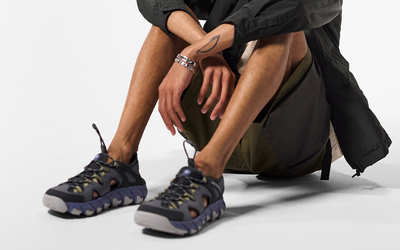.jpg)

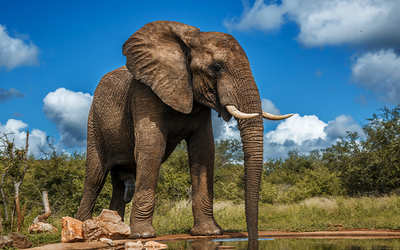.jpg)




